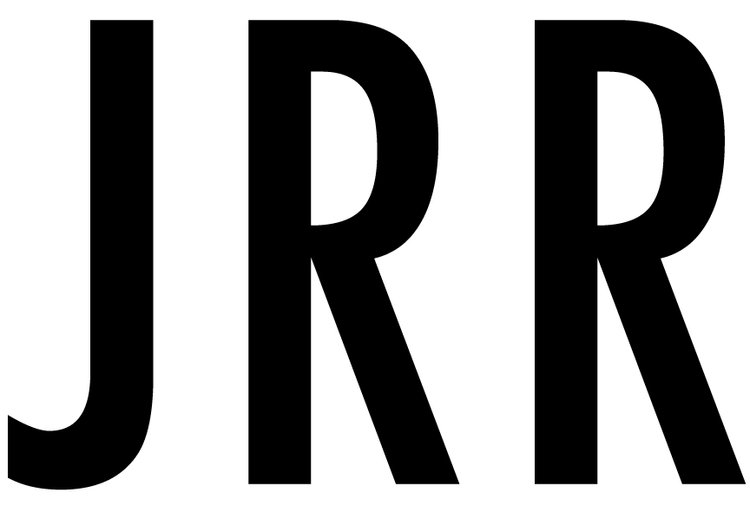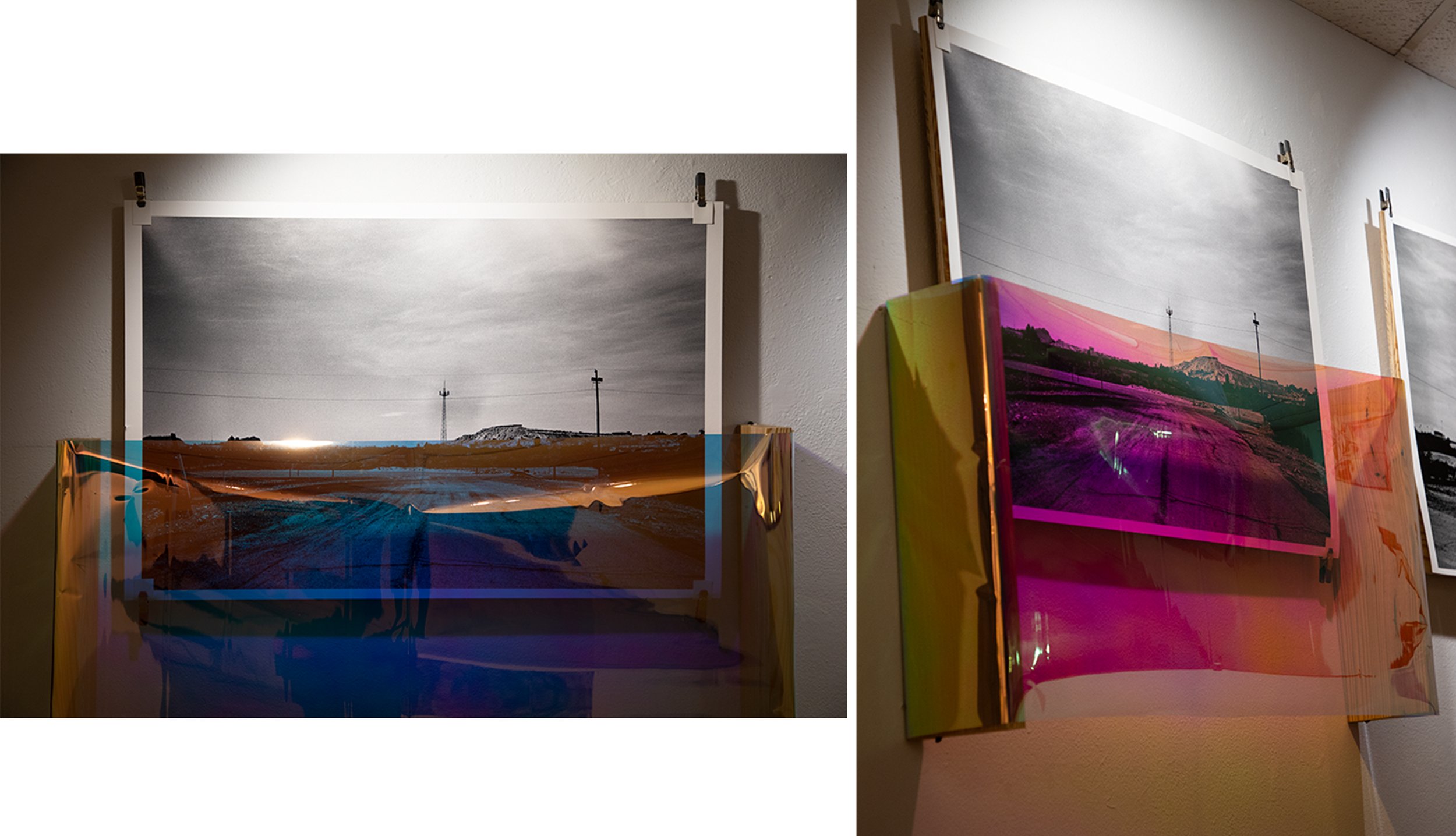In/Between | A Rock and a Hard Place:
Visions from the Ghost World of how to Survive One’s Sovereignty of Self Destruction in a Land We Assumed We Once Knew.
2019
Rice Media Center, Rice University, Houston, Texas
Gallery Night View, left.
Gallery Night View, right.
Sliding through planes / Folded In-Between dimensions - Shot in 2016
Sliding through planes / Folded In-Between dimensions
Installation Shot
Rice University Media Center, Houston, Texas
2019
On Being In/Between
Justin Raphael Roykovich describes the past five years of his life as nomadic. This is a common reality for artists piecing together residencies and teaching jobs as they try to find a homebase while embracing the freedom of not being tied to one. Roykovich has worked in New York, Washington, DC, Minneapolis, and most recently Galveston, Texas. The Galveston Artist Residency gave Roykovich a studio, and for a year he found grounding. I use the word grounding intentionally because his culminating exhibition at the residency largely consisted of objects unearthed from a nearby construction site. Currently Roykovich teaches at Rice University in Houston, Texas, and he is reflecting on his travels through the state of Texas and his time in “The West” -- a historically mythic, grandiose place.
Roykovich’s installation at Rice University’s Media Center presents his impressions, recollections, and readings of the Texas landscape through photography, drawing, found objects and text. It is a compilation of places assembled into a psychic map that volleys between the specific and the abstract. An enlarged photograph tiled on a wall legibly captures a rock surface, but viewed up close it could look like a fuzzy broken image, digital glitch or interference. Roykovich’s drawings, done in the studio removed from the landscape, look like geological strata quilted together, sliding down the page, aerial views of land meeting water, or hypnotic mark making.
Many of us in a nomadic state may simply fixate on our destination as we travel from point A to point B, but Roykovich gravitates to the in between places. He uses this phrase, the “In/Between” in his exhibition’s title, and he writes about how the term defines his relationship to reality as “part removed, part immersed and always existing in a space of my own.” I write this essay in my own “in between” state. A former resident of Houston now living in the greater Boston, Massachusetts area, I rely on email exchanges, written descriptions, digital images, and sketches to understand an installation Roykovich is in the midst of preparing to compose largely onsite in the Rice University Media Center gallery space. I can sometimes imagine myself in or navigating his installation, but I can never actually see it or experience it. I only mention this fact because this predicament feels fitting for writing about an artist who wants to place us inside of his experience of the Texas landscape, an experience that may at once feel familiar to people who have spent time in Texas, but at the same time made strange through Roykovich’s distorted lens.
Instead of simply passing through, Roykovich takes the time to look, listen, and record his observations of these in between places, many of them non-descript or seemingly empty. He uses an electronic device called an Ovilus 5 that ghost hunters and others who wish to communicate with spirits use to generate long strings of text that the device spits out as it purportedly picks up the voices of the dead. The Ovilus 5’s readings become found poems that Roykovich mixes with his own words that relate to research he has done about a particular place or his immediate observations. In Roykovich’s hands, the Ovilus is not a literal tool or transmitter, but a metaphorical device. It is a symbolic instrument that shows the seemingly empty as something full of invisible energies and the superficially non-descript rich with hidden stories, often involving murder and trauma. He has traveled through Galveston, a place often described as haunted, as well as “The Texas Killing Fields,” a stretch of the I-45 corridor between Houston and Galveston where since the 1970s the bodies of 30 unsolved murder victims have been found. He does not assert that he has necessarily captured the voices of the dead, but that instead he has found a “a way to let that environment, which otherwise could not be accessed, have a phonetic voice.” He continues to explain:
“I am curious as to what the land has to say, as particles and atoms and molecules that have been around since The Big Bang. What can it tell us about where we are now? What if we had listening parties on lands that are scared from trauma, or have held sacred rituals - what would the land tell us? … What we perceive as the banal and ordinary landscape of our daily lives is actually teeming with morsels of discovery like grubs emerging from the dirt.”
But unlike a traditional landscape painter setting up their easel to capture a sublime piece of Western landscape before their eyes, Roykovich gives equal weight to the seen and unseen elements he finds in a place, holding them in a vibrating state of tension. An example of this is a 44” x 20 photograph snaking through the gallery space. Reading it from left to right, the image unfolds out before us to show a mountain ridge’s silhouette interrupted with intense bands of bright red and yellow. The bands of color look like solar flares where the camera becomes flooded with light, overwhelmed by the brightness of the sun and yielding to an unseen intensity and force.
Part of Roykovich’s intentions is to forge a deeper connection to places we may take for granted and that are rapidly changing because of climate and social change. He wishes to draw our attention not simply to the grandeur of a vista -- an impulse that could easily slide into a nature worshipping cliche -- but instead to the buzzing magnitude and mystery of basic reality. Influenced by theoretical physicists writing about the nature of reality and origin of the universe, he describes the neon strings he often uses in his installations as “materializing the hidden latticework that keeps our reality upright from collapsing.” The strings could be fiber optic cables, rays of light, a photon’s path of travel, and a very literal nod to string theory. It may sound exhausting to imagine every slice of reality as teeming with possibility, but it is much better than the alternative. Roykovich’s desire to observe and listen to the places that may not be culturally demarcated with historical plaques or set aside as important, is a cure for the malaise that could set in when you may feel stuck in the middle of nowhere. It is a reminder that we are always somewhere that has a story to tell, but how we access that story is the creative act.
Joshua Fischer
Independent Writer and Curator at Large
Boston, MA
2019







